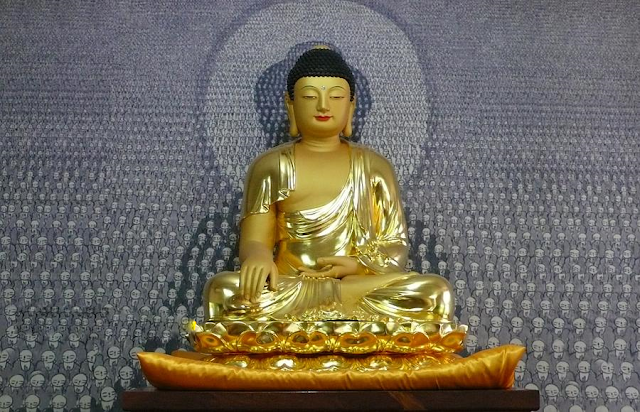A Brief History of Buddhism
To understand Buddhism, you have to first understand the man behind one of the world’s most popular religions.
Siddhartha Gautama, known as the Buddha, was born a wealthy prince in India sometime between the sixth and fourth centuries BCE.
Protected from the outside world, Siddhartha became increasingly interested in what life was like beyond the security of the palace walls.
Eventually, after sneaking to the outside world, he came to learn that all people must eventually die (talk about a sheltered life!), a truth that shook him to his core.
He saw the progressive stages of birth, youth, old-age, and eventual death; a cycle that seemed horrible and full of suffering.
Siddhartha became determined to break the cycle.
The Middle Path
Leaving his family and the throne of his kingdom, he vowed to wander the countryside until he found enlightenment.
Undertaking difficult austerities for years, he nearly killed himself trying to understand the nature of reality.
However, this attempt eventually proved to be too extreme.
Undaunted, he decided to change his philosophy, and began to follow what he called the “middle path”- the mid-point between opposite extremes.
He ate normally, found shelter and clothes, but continued his diligent practice of meditation.
Eventually, this led to a deeper spiritual awareness than he ever experienced before.
This continued until one day, he vowed to sit beneath a banyan tree until he found enlightenment.
After 7 days, that’s exactly what happened.
Siddhartha had transformed himself into “Buddha”- the enlightened one- a being that had finally broken the chains of suffering and reincarnation.
The Four Noble Truths
After Siddhartha became the Buddha, he began travelling India spreading the teachings of enlightenment.
The foundation of these teachings became known as the Four Noble Truths.
In the Four Noble Truths, Buddha taught:
1. Everything in life revolves around suffering. Because of the cycle of birth and death (reincarnation) not even death will alleviate suffering.
2. Desire and attachment are the root cause of suffering, which is a reflection of our spiritual ignorance.
3. When a person overcomes suffering and attachment, they enter enlightenment and suffering ends.
4. Ending desire and attachment is an eightfold path:
- Right understanding
- Right purpose
- Right speech
- Right conduct
- Right livelihood
- Right effort
- Right alertness
- Right concentration
Moral Guidelines
Buddha also taught that each person should abide by basic moral precepts for both lay members and monastics:
- Not to kill.
- Not to steal.
- Not to act in an unchaste manner.
- Not to speak falsely.
- Not to take intoxicants.
- Not to eat at times not appointed.
- Not to view entertainments deemed as “secular.”
- Not to wear perfumes or bodily ornaments.
- Not to sleep in beds that are too high or too wide (too much comfort).
- Not to accept money.
Teachings for the Ages
Buddhism was founded on the idea that everyone- not just a specific caste or group of people- can achieve spiritual enlightenment.
Buddha’s teachings empowered an entire culture to take their spiritual path into their own hands, letting go of rigid Vedic rites and rituals.
Unlike almost every religion in the world, Buddha’s teachings spread throughout the east without war or death.
This has led many people to say Buddhism is the most peaceful religion in the world!

